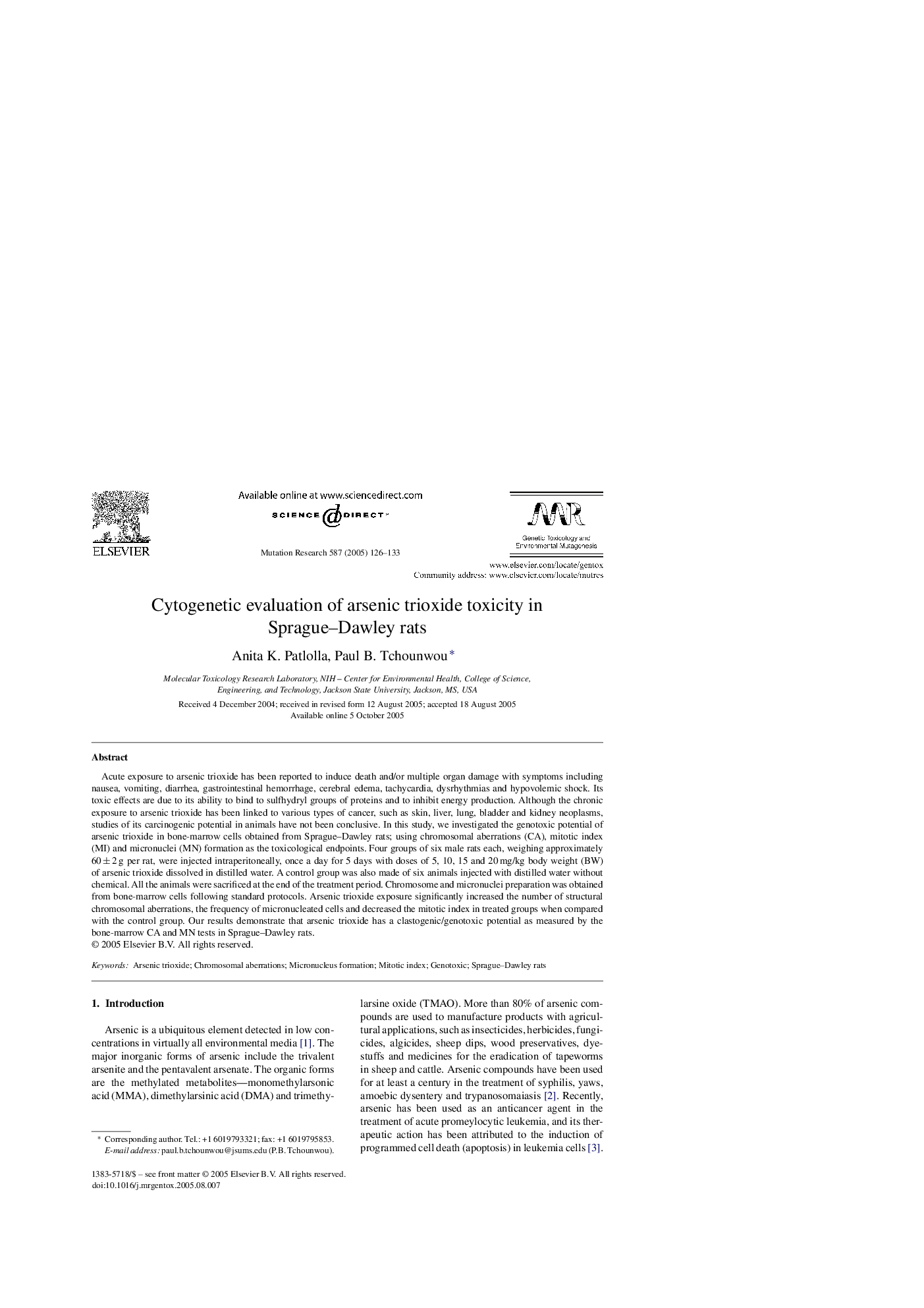| Article ID | Journal | Published Year | Pages | File Type |
|---|---|---|---|---|
| 9910091 | Mutation Research/Genetic Toxicology and Environmental Mutagenesis | 2005 | 8 Pages |
Abstract
Acute exposure to arsenic trioxide has been reported to induce death and/or multiple organ damage with symptoms including nausea, vomiting, diarrhea, gastrointestinal hemorrhage, cerebral edema, tachycardia, dysrhythmias and hypovolemic shock. Its toxic effects are due to its ability to bind to sulfhydryl groups of proteins and to inhibit energy production. Although the chronic exposure to arsenic trioxide has been linked to various types of cancer, such as skin, liver, lung, bladder and kidney neoplasms, studies of its carcinogenic potential in animals have not been conclusive. In this study, we investigated the genotoxic potential of arsenic trioxide in bone-marrow cells obtained from Sprague-Dawley rats; using chromosomal aberrations (CA), mitotic index (MI) and micronuclei (MN) formation as the toxicological endpoints. Four groups of six male rats each, weighing approximately 60 ± 2 g per rat, were injected intraperitoneally, once a day for 5 days with doses of 5, 10, 15 and 20 mg/kg body weight (BW) of arsenic trioxide dissolved in distilled water. A control group was also made of six animals injected with distilled water without chemical. All the animals were sacrificed at the end of the treatment period. Chromosome and micronuclei preparation was obtained from bone-marrow cells following standard protocols. Arsenic trioxide exposure significantly increased the number of structural chromosomal aberrations, the frequency of micronucleated cells and decreased the mitotic index in treated groups when compared with the control group. Our results demonstrate that arsenic trioxide has a clastogenic/genotoxic potential as measured by the bone-marrow CA and MN tests in Sprague-Dawley rats.
Keywords
Related Topics
Life Sciences
Biochemistry, Genetics and Molecular Biology
Cancer Research
Authors
Anita K. Patlolla, Paul B. Tchounwou,
